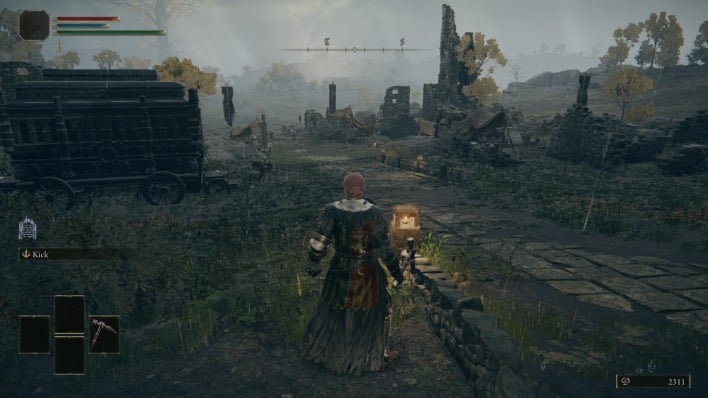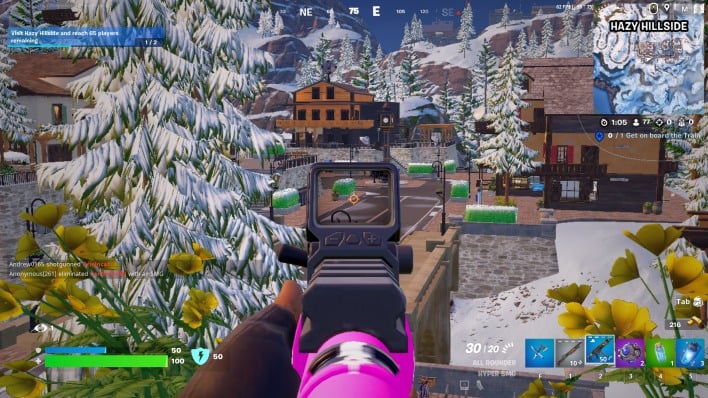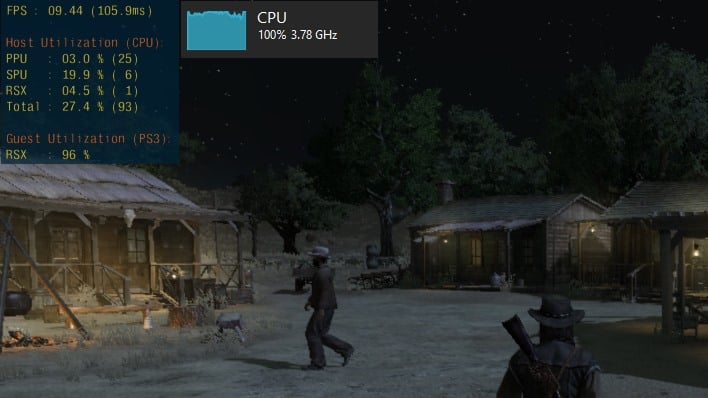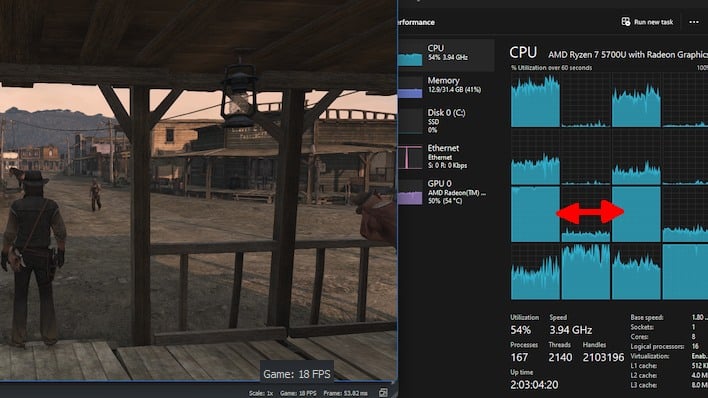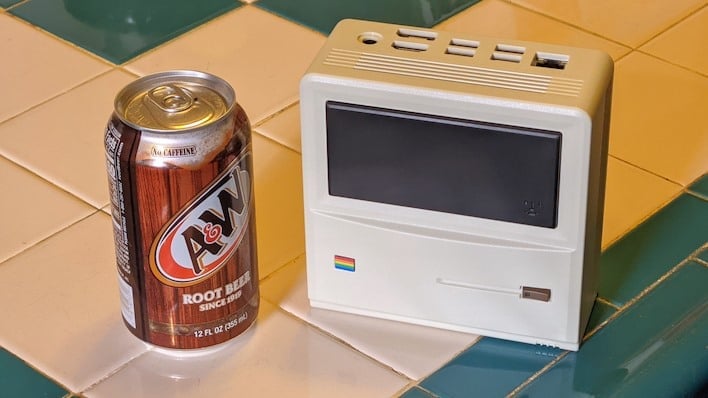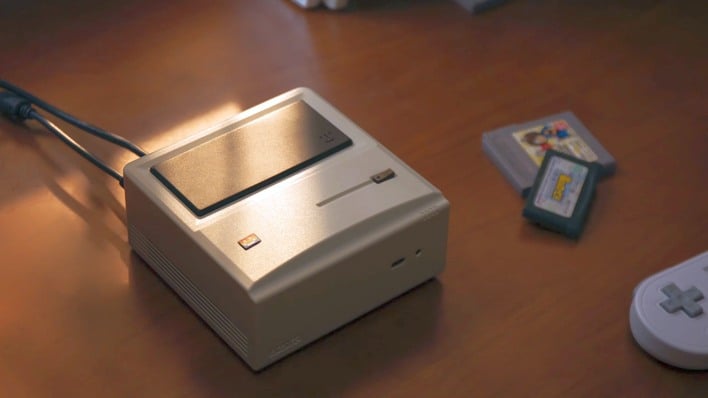Ayaneo Retro Mini PC AM01 Review: Cool, Compact, Computing Fun
Ayaneo Retro Mini PC AM01: Testing, Benchmarks, And Conclusions
Ayaneo Retro Mini PC AM01 Synthetic Benchmarks
Before we get into gaming, let's look at some system and productivity numbers. First up is an old favorite of ours, ATTO Disk Benchmark. This quick and simple storage test serves to let us easily tease out any obvious issues with a machine's storage subsystem.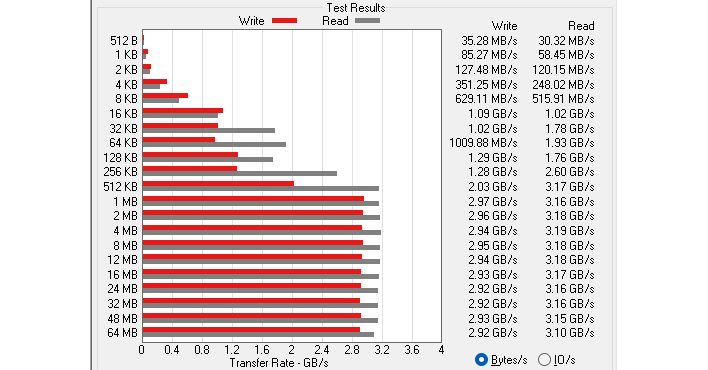
In this case, everything seems to be in order. There's nothing shocking here; while the performance isn't outstanding, even for a PCIe 3.0 SSD, it's also not particularly bad. In short, the NM620 is performing broadly in line with its specifications. You get what you pay for, in terms of its storage subsystem.
Besides ATTO, we also threw the usual battery of basic system benchmarks at the machine. Both current and previous versions of Maxon's Cinebench test, current and previous versions of Geekbench, Browserbench.org's Speedometer and Jetstream benchmarks, and then we threw in the CPU-Z benchmark just for good measure. With the exception of Cinebench, all of these are purely synthetic tests that don't necessarily represent the real performance of the system, but they give us an idea where it sits in the market.

With all the results piled into one chart that way, it does make the scale a little awkward, but you'll want the numbers anyway. Generally speaking across all tests, this machine scores right alongside a Ryzen 9 4900HS, just as we mentioned before. It also scores right behind the Ryzen 7 3700X, which makes sense considering it has the same eight-core Zen 2 configuration as that part, just with lower clocks and less cache.
Notably, the AM01 also frequently beats the Apple M1 and M2 in the multi-core scores, but of course those CPUs thrash the poor Lucienne by nearly 50% in the single-core arena. Still, while it may not be the latest technology, Zen 2 holds up just fine for these kinds of productivity tasks. We wouldn't recommend using an AM01 as a rendering workstation, but it could serve in a pinch.
Ayaneo Retro Mini PC AM01 Hardcore Games Benchmarks
Of course, this is what you're here to see, right? How well does it game? That's a complex question. Ayaneo does not advertise the AM01 as a gaming system beyond retro gaming. We'll look at emulation in a bit, but really, this is a reasonably modern processor with DirectX 12-capable graphics. How does it hold up against modern games?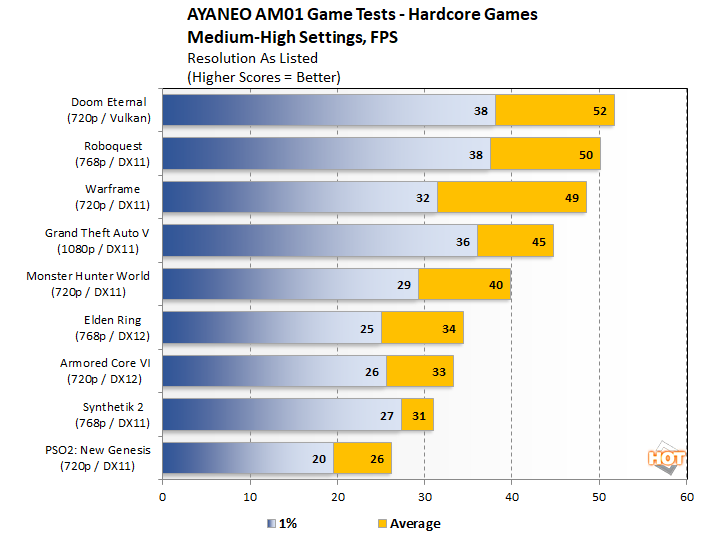
The answer is, just so-so. You see, while this is a "Ryzen 5000" processor, the graphics are strictly 2017 vintage. That is to say that they're based on the Vega architecture, just like the integrated graphics on every Ryzen APU until the "Rembrandt" Ryzen 6000 processors. Combined with the relatively low-end memory bandwidth of the system's DDR4-3200 memory, you end up with a few obvious system bottleneck in games.
Still, it's not all doom and gloom. If you keep the resolution modest to accommodate the meager memory bandwidth, plenty of demanding 3D games play just fine. Standouts include Doom Eternal, which looks and plays great on this system, and indie looter shooter Roboquest, which runs surprisingly well given its Unreal Engine basis. The ten-year-old Grand Theft Auto V runs rather well too, likely due to heavy optimization attention from AMD's driver team. Curiously, Warframe runs much better when using old-school resolution scaling versus FSR upscaling; we suspect that the 8-CU Vega graphics adapter doesn't have the GPU compute to spare for the FSR algorithm.
Interestingly, Elden Ring actually runs considerably better than FromSoftware's newer title, Armored Core VI: Fires of Rubicon. Where Elden Ring is completely playable at a 34 FPS average—that's with textures on "Maximum", by the way—Armored Core VI doesn't feel great at this kind of performance level. Unity-engine indie roguelike shooter Synthetik 2 is a pretty bad experience on this system, and SEGA's sci-fi MMO PSO2: New Genesis is barely playable as expected, considering that it has never run particularly well on AMD graphics hardware.
These really aren't the kind of games you should be playing on a system like this anyway, though. If you're a "core" gamer who wants to play major game titles, you should probably either have a dedicated gaming PC or console. This sort of system definitely isn't useless for that type of game, as we've just demonstrated, but you'd have a markedly better experience with a machine that has dedicated graphics hardware—or at least DDR5 RAM.
Ayaneo Retro Mini PC AM01 Lightweight Game Benchmarks
The rise of the digital delivery marketplace heralded the explosive growth of so-called "indie" games. As much as it is about the independent nature of game developers so-labeled, the "indie" appellation is also about titles that don't feel compelled to push the envelope in terms of technology or game design. Not all of our lightweight games here are indie, however, and certainly Fortnite is no kind of indie game. Still, that's the sort of workload we're dealing with here.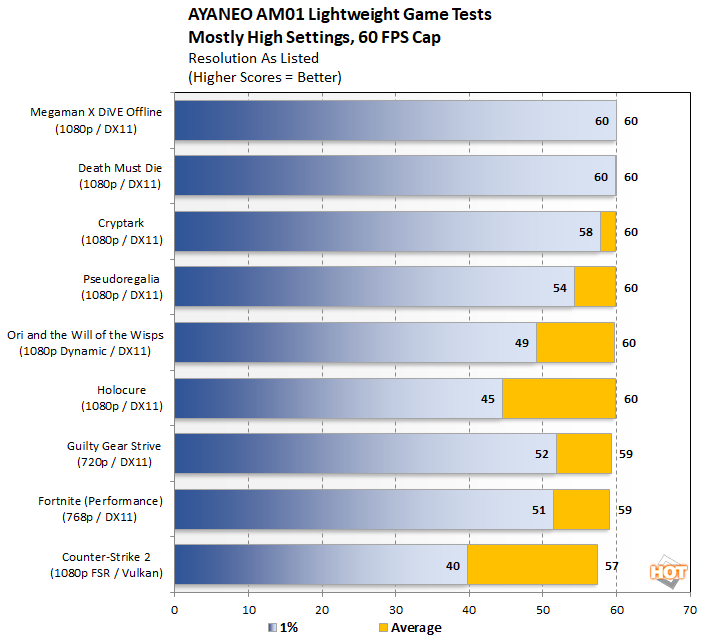
Titles like Death Must Die, Cryptark, and HoloCure are so system-friendly that they barely make sense to benchmark. Holocure has some frame pacing issues that bring the 1% low framerate down, but the machine is barely loaded at all while playing it. Megaman X DiVE Offline, as a direct port of a mobile game, is similarly trivial despite the full 3D presentation; it runs at hundreds of FPS on this machine if left uncapped, which is just a waste of power.
Fortnite's ultra-lightweight "Performance Mode" isn't pretty, but it's a completely-playable Battle Royale experience, and it runs just fine on this machine. In fact, if you uncap the framerate, it'll get up into the 70s and even the low 80s at times, although your framerate consistency will get worse. Counter-Strike 2 is more demanding, but the real problem isn't so much the framerate as it is a persistent stuttering issue that improves over time, but never completely goes away. Other E-sports games like League of Legends will also be completely playable on the AM01.
Ayaneo Retro Mini PC AM01 Emulation Benchmarks
As we noted before, Ayaneo's gaming emphasis for this system is retro gaming. We did load up some older PC games; they run exactly how you'd expect. That is to say it scores multiple hundreds of FPS in Unreal Tournament 2004 and Need for Speed Underground 2. The real test is in emulation: running games that were never coded for this hardware, but instead for console game systems.We started modest, with the original PlayStation and the Sega Saturn. No problems there. We then moved up to the PlayStation 2 and Gamecube. Everything was fine; even God of War 2, one of the most challenging games on the PlayStation 2, runs just as well as on real hardware in its progressive scan 480p mode. Nintendo Wii games actually ran even better; a testament to the skilled programmers who have worked on Dolphin Emulator for the last ten years.
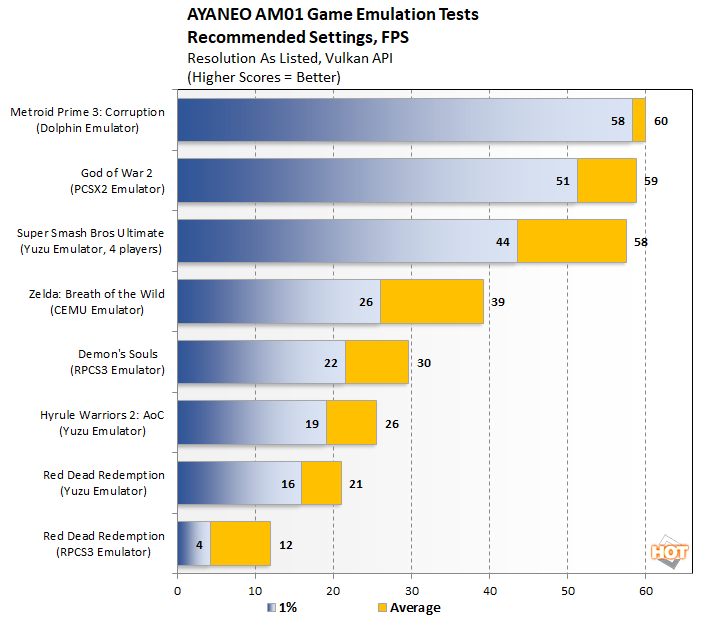
Moving up to the Wii U, we tried one of the last games for that system, The Legend of Zelda: Breath of the Wild. This is likely the single most-optimized game on the emulator, and it had a 30 FPS cap on real hardware. We used the FPS++ mod to raise the frame rate cap to 60, then recorded a few minutes of outdoor gameplay. The result was a better-than-real-hardware experience; not bad for a machine like this.
Naturally, it was time to try a real challenge: PlayStation 3 emulation. The RPCS3 emulator is a work of wizardry; getting PlayStation 3 emulation stable and functional across almost the entire PS3 library is nothing short of a miracle. It's not easy, though. As you can see in the chart, while the performance in the relatively-undemanding Demon's Souls is acceptable, Red Dead Redemption is totally unplayable in RPCS3 on the AM01.
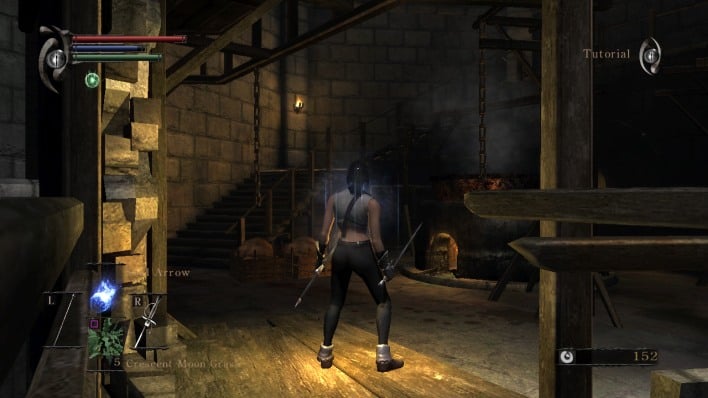
However, we can say with confidence that anything older than the Wii U, including the Wii, PlayStation 2, and even the original Xbox, will emulate just fine on this machine. If you're keen to play some Street Fighter II Rainbow Edition in MAME with the boys, just connect your controllers via wires or bluetooth, load up the game, and have a ball.
Ayaneo Retro Mini PC AM01 Power & Thermals
This section will be brief as there's not much to say. If you want to skip it, here you go: this machine gets full marks on power and thermals. No complaints. Of course, we can't just leave it at that. To wring the absolute maximum power output from this machine, we used OCCT's power supply test mode that fully loads both CPU and GPU. This resulted in an average clock of 2.7 GHz across all eight CPU cores and around 1 GHz on the GPU; 35W really isn't enough to wring the full potential out of this chip.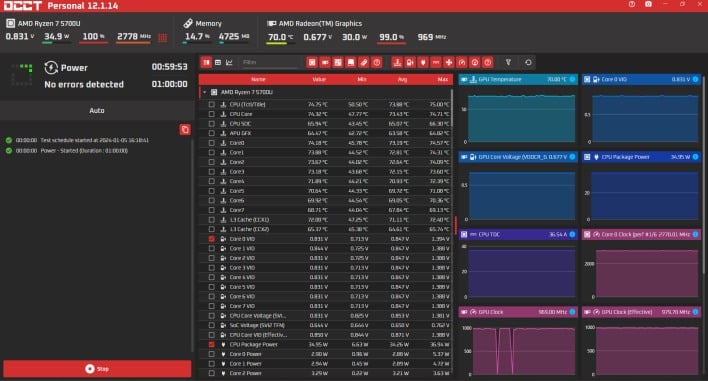
After an hour of testing, the highest temperature reached on the SoC was 75°C, which is well under AMD Lucienne's maximum operating temperature of 105°C. That does lend some credence to Ayaneo's claim that this machine will support a power limit of 54W, given that it's not even approaching its power limits when fully loaded at 35W. Running full-out like that, a little machine like this must have its fans screaming, right? Nah...
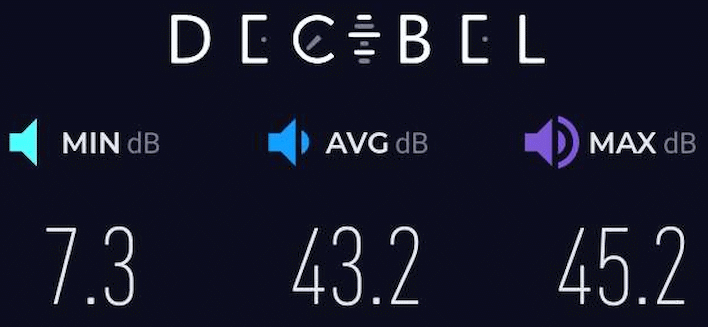
We left Decibel running on the desk one foot away from the system for the duration of the OCCT test. Don't pay any mind to the minimum value; that's an artifact of resetting the sensor data at the start of the test. The maximum value of 45 dB is very low, and according to OCCT's readings, that's only a 50% duty cycle on the included fan, so there's still a lot of headroom for extra cooling, too.
Ayaneo Retro Mini PC AM01 Closing Thoughts and Last Word
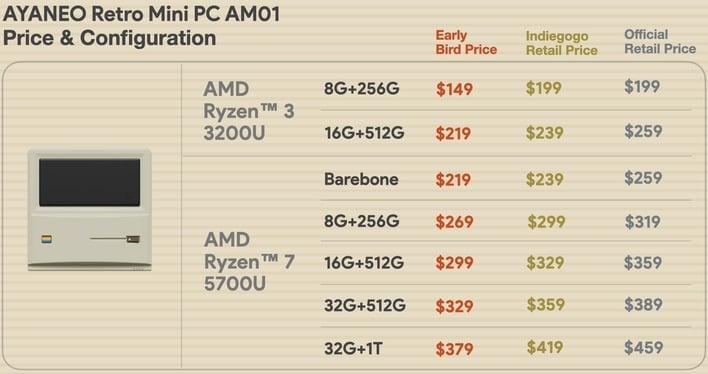
Ultimately, the AM01 does what Ayaneo says it will do, and it's reasonably priced, and those qualities make it a solid product. Whether it is a good product for you is a whole other question altogether. If you want an ultra-low-power PC for point of sale, you might want to consider the Ryzen 3 3200U version. If you want a mini-PC for current core games, you should probably look elsewhere. However, if you need a small desktop PC for student or office work, or as an HTPC with light gaming, Ayaneo's first mini-PC can offer that with some retro styling to add some flare and fun-factor.

|
|

